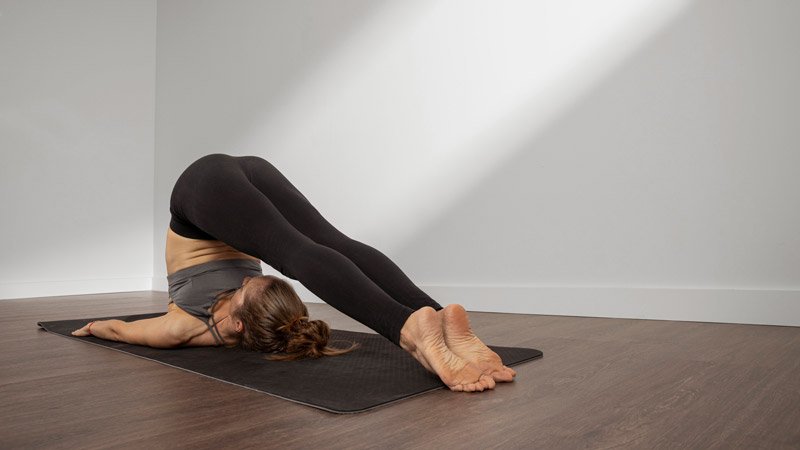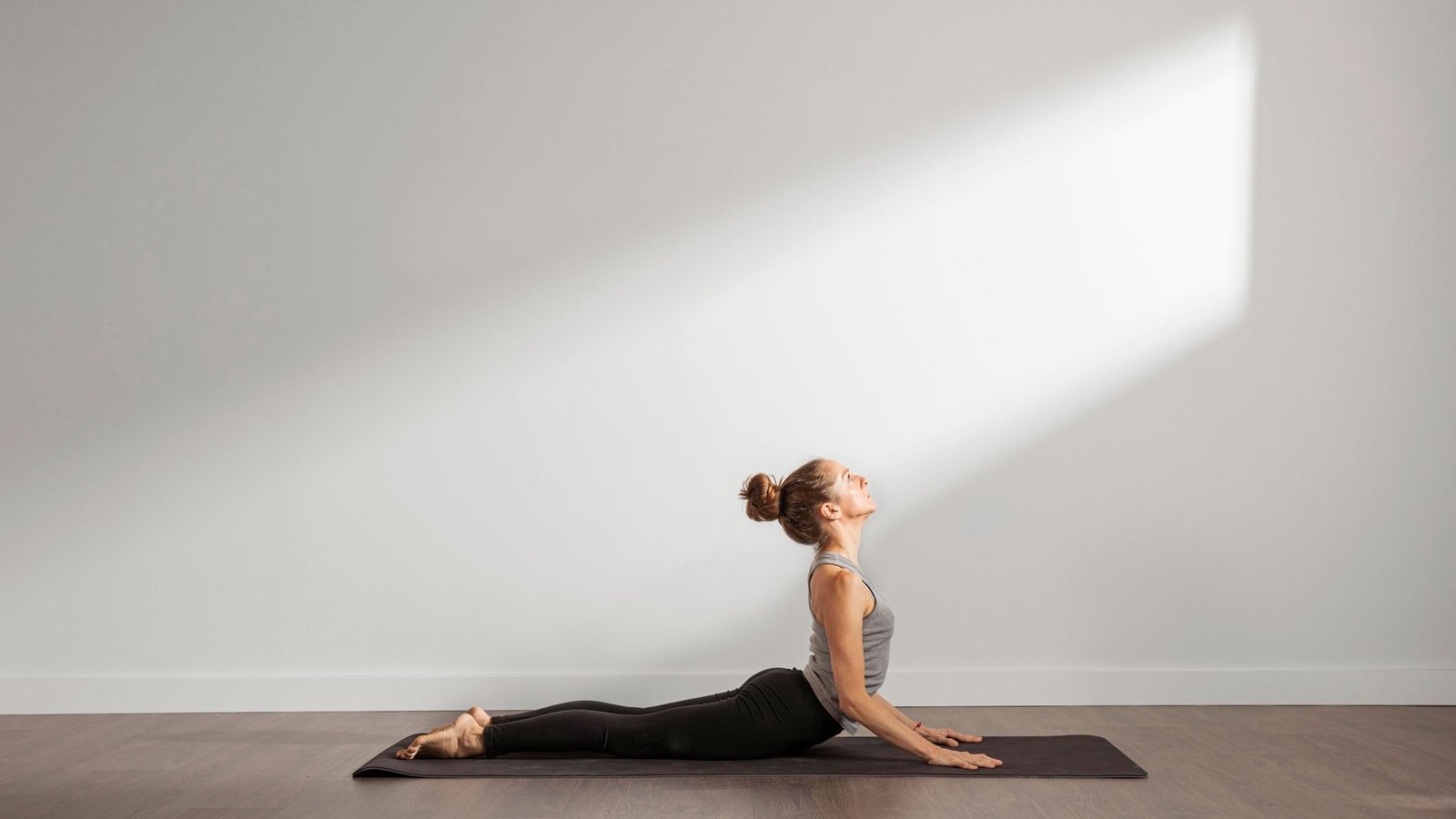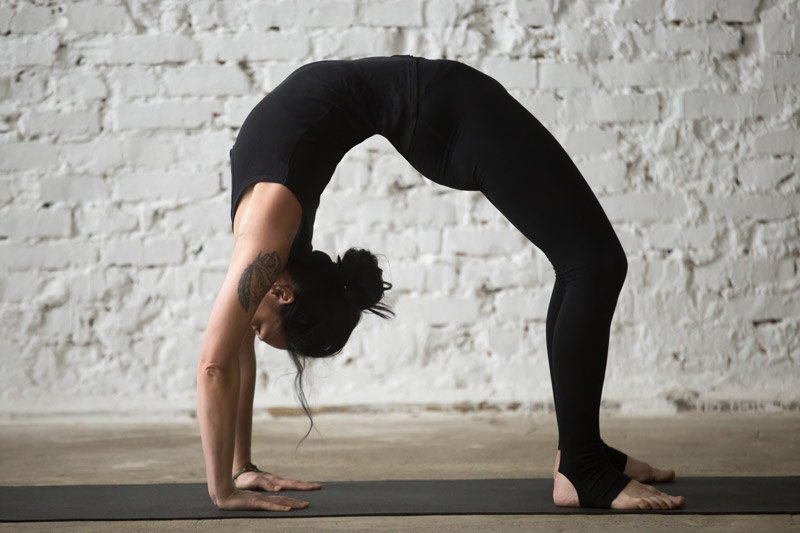Halasana, or the Plow Pose, is a classical inverted yoga posture known for its rejuvenating effects on the spine, nervous system, and internal organs. The name Halasana comes from the Sanskrit word Hala, meaning plow—a traditional farming tool used to till the earth. Symbolically, this asana prepares the body and mind for inner cultivation, just as a plow prepares the soil for new growth. Regular practice of Halasana can increase flexibility, improve digestion, and calm the mind, but it requires proper technique and caution due to its intensity.
Steps to Perform Halasana
Starting Position: Lie flat on your back in Shavasana (Corpse Pose) with your arms resting alongside your body, palms facing down.
Raise Your Legs: Inhale and lift both legs together to a 90-degree angle, keeping them straight and together.
Lift the Hips and Back: Place your hands on your lower back for support and slowly raise your hips off the ground, moving your legs over your head.
Bring Toes to the Floor: Lower your legs behind your head until your toes touch the floor. Keep your legs straight and your neck relaxed. Your back should be perpendicular to the floor.
Extend the Arms: Once stable, stretch your arms along the floor behind your back, interlocking the fingers if comfortable.
Hold the Pose: Maintain the position for 15–30 seconds to begin with, breathing slowly and deeply. With practice, this can be extended to 1–2 minutes.
To Release: Gently support your back with your hands and slowly roll your spine down, one vertebra at a time, bringing your legs back to the floor.
Benefits of Halasana
Stretches the Spine and Shoulders: Halasana provides a deep stretch to the entire spine, neck, and shoulder region, enhancing flexibility and relieving tension.
Stimulates Internal Organs: The compression of the abdomen massages the digestive organs, improving digestion and metabolism.
Regulates the Thyroid Gland: The pressure on the neck stimulates the thyroid and parathyroid glands, helping in hormonal balance.
Improves Circulation: As an inversion, it increases blood flow to the brain and upper body, refreshing the mind and aiding concentration.
Calms the Nervous System: Halasana has a soothing effect on the brain, relieving stress, anxiety, and fatigue.
Strengthens the Back and Core: Supporting the body in this pose engages the abdominal and back muscles, promoting strength and stability.
Helps with Menstrual Discomfort: With proper practice, it may help alleviate menstrual cramps and discomfort.
Tips for Practicing Halasana
Warm Up Beforehand: Prepare with gentle spinal stretches like Setu Bandhasana (Bridge Pose) or Sarvangasana (Shoulder Stand).
Use Props: Beginners can use a folded blanket under the shoulders or place a chair/bolster behind the head for support if the toes don’t reach the floor.
Move Slowly and Gently: Enter and exit the pose with slow, controlled movements to avoid strain or injury.
Keep the Neck Neutral: Avoid turning your head to the side while in the pose to prevent neck injury.
Focus on Breath: Maintain smooth, steady breathing to keep the mind calm and body relaxed.
Cautions and Contraindications
Neck or Spine Issues: Avoid Halasana if you have cervical spondylosis, herniated discs, or any serious spinal conditions.
High Blood Pressure or Glaucoma: The inversion can increase pressure, so it’s best avoided without medical advice.
Pregnancy: Not recommended during pregnancy.
Menstruation: Inversions are generally avoided during menstruation.
Hernia or Abdominal Surgery: Avoid this pose if you have a hernia or have recently undergone abdominal surgery.
Beginners’ Caution: Learn under the supervision of a trained yoga instructor, especially in the initial stages.
Halasana is a transformative yoga posture that brings strength, flexibility, and inner stillness. It rejuvenates the spine, revitalizes internal organs, and promotes a calm, focused mind. However, due to its intense nature, it must be approached with awareness, proper alignment, and patience. With consistent and careful practice, Halasana can become a powerful tool for physical healing and mental renewal.






